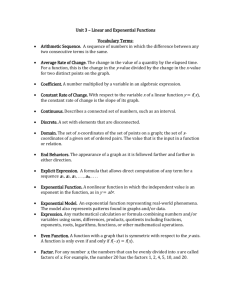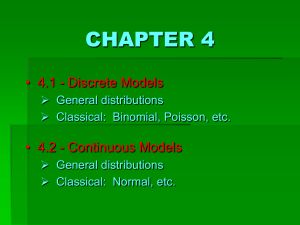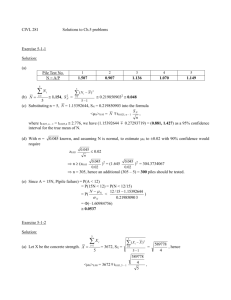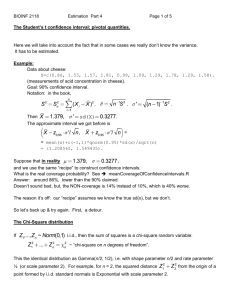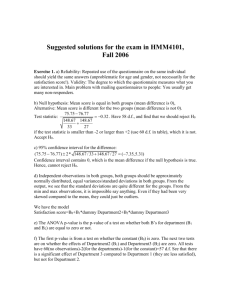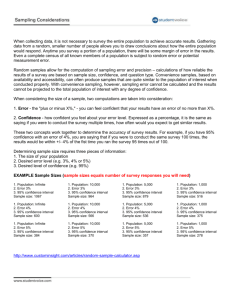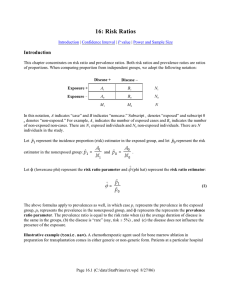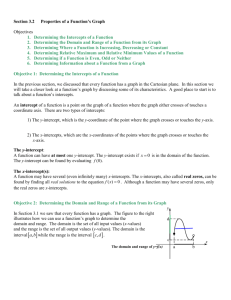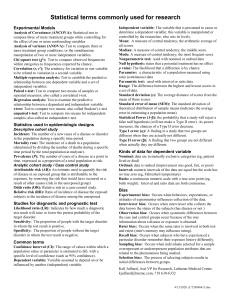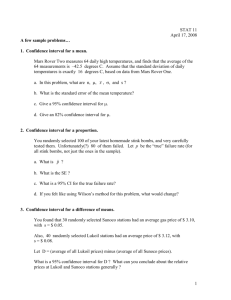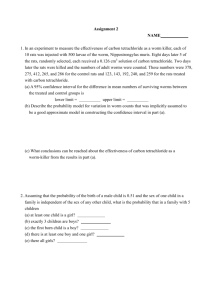P(-1.96 z < 1.96) = .95
advertisement
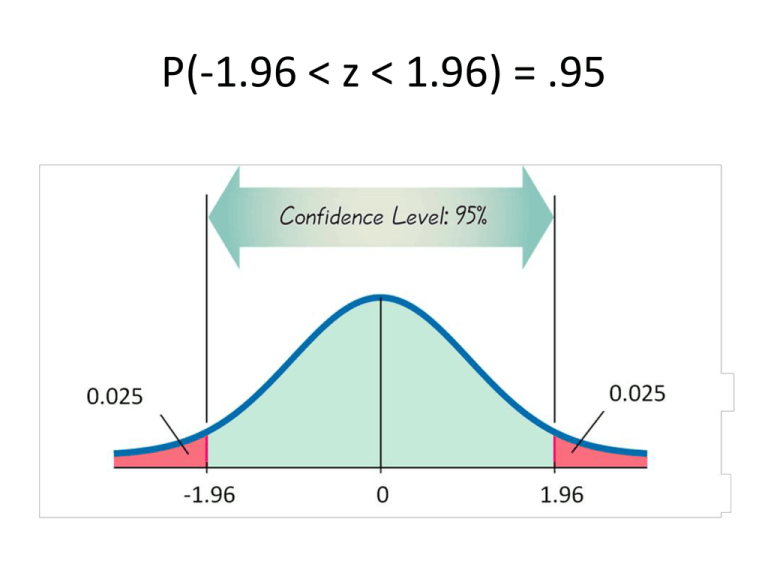
P(-1.96 < z < 1.96) = .95 Shape of t Distributions for n = 3 and n = 12 Degrees of Freedom (dof) Example: If 10 students take a quiz with a mean of 80, we can freely assign values to the first 9 students, but the 10th student will have a determined score. We know the sum of all 10 has to be 800; so when we add up the first 9 that sum will establish what 10th score has to be. Because the first 9 could be freely assigned we say that there are 9 degrees of freedom. For applications in this section the Degrees of Freedom is simply the sample size minus one : dof = n-1 Properties of the Chi-Square Distribution The chi-square distribution is not symmetric, unlike the normal and t distributions. As the number of degrees of freedom increases, the distribution becomes more symmetric. Chi-Square Distribution Chi-Square Distribution for df = 10 and df = 20 A symmetric distribution is convenient, we only have to find value for a z-score (or tscore) because we know the other side will be the simply the positive or negative. Confidence Interval for σ (n 1)s 2 , 2 /2 (n 1)s 2 2 1 /2 (n 1)s 2 , 2 R (n 1)s 2 2 L • Since the distribution is not symmetric we have to look up 2 separate scores for a confidence interval. • The area we find will be to the right of the score. 2 • 2 / 2 R2 • 12 / 2 L2 will be the larger value. will be the smaller value. • X z Confidence Interval for μ with known σ: /2 n • Find sample size for mean: n z /2 m 2 s • Confidence Interval for μ with unknown σ: X t /2 n • Confidence Interval for p: pˆ Z / 2 • Find sample size for proportion: n z ˆˆ pq n 2 /2 ˆˆ pq E2 OR z 2 / 2 n 4E 2 • Confidence Interval for σ : ( n 1) s 2 , 2 /2 ( n 1) s 2 12 / 2 ( n 1) s 2 , 2 R ( n 1) s 2 L2



